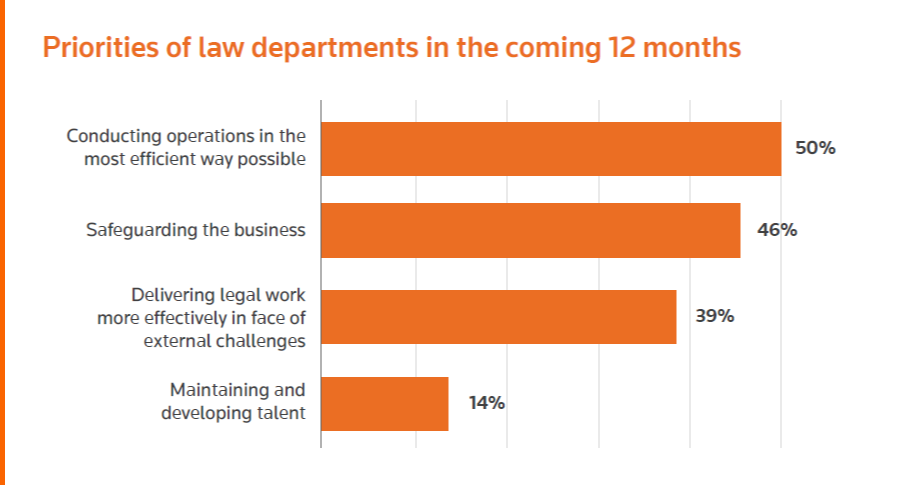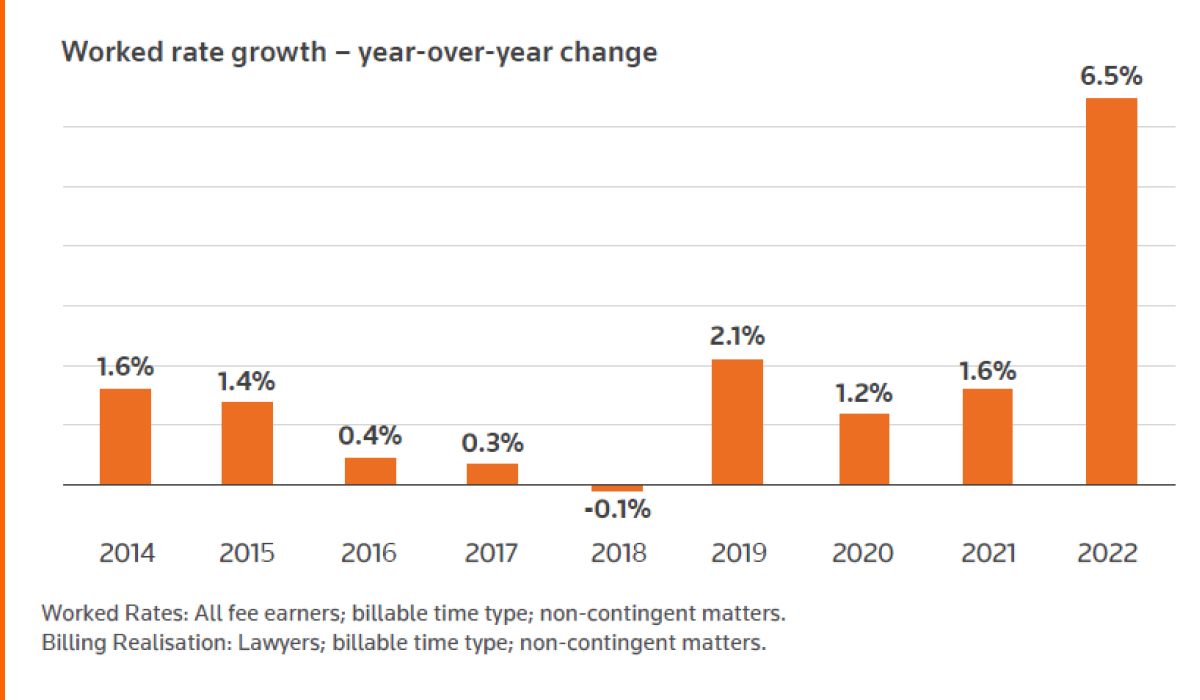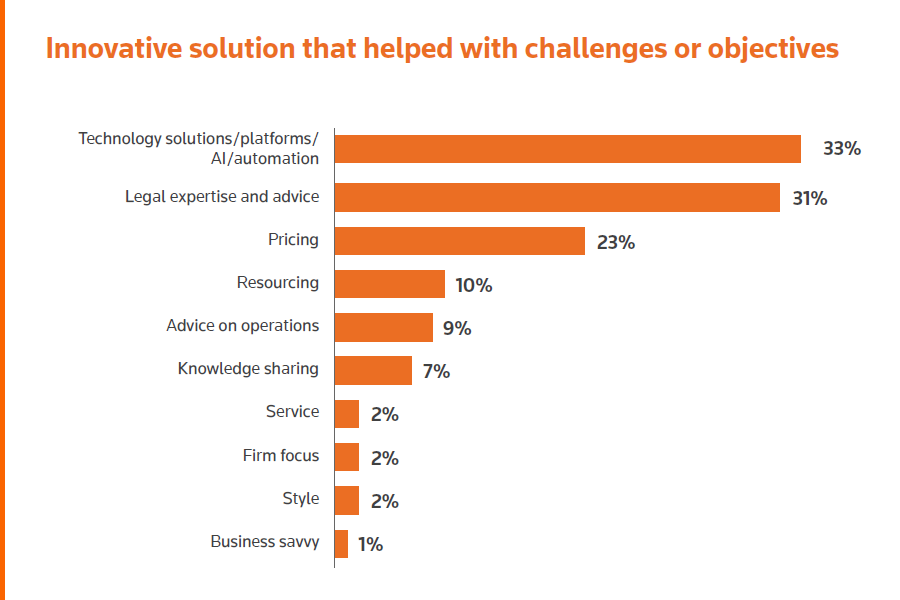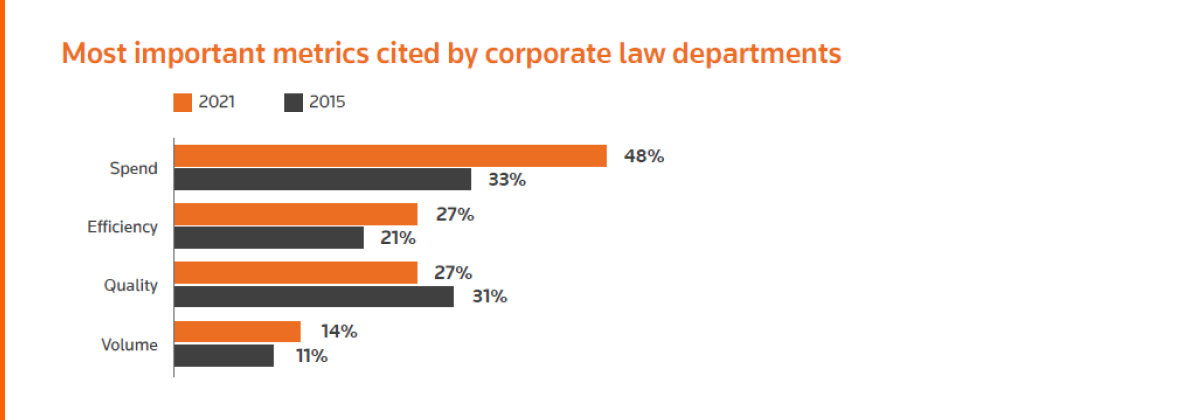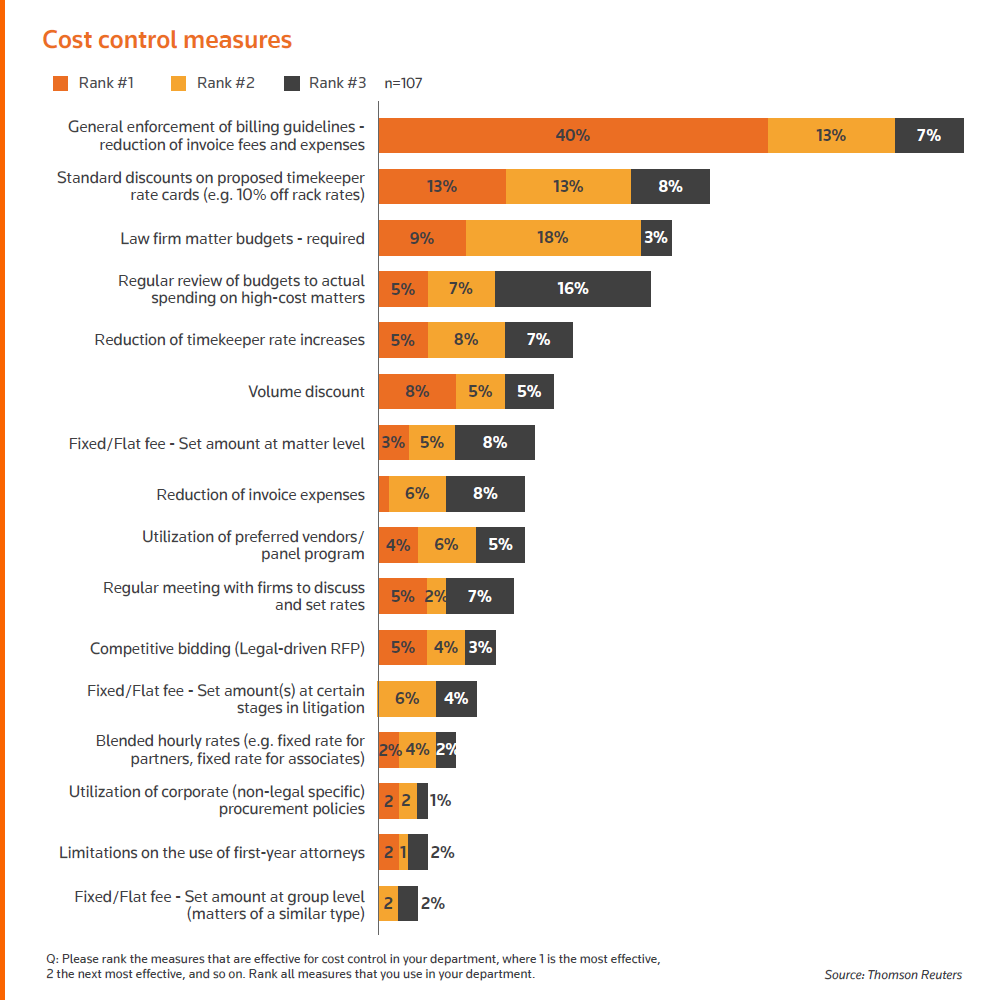The transition to a post-pandemic world has introduced a new set of challenges for Australian legal teams – rising inflation, global geopolitical challenges, remote work and widespread talent have created a perfect storm where the costs of legal resources (both in-house and external) are rising, work volumes are increasing and organisations are simultaneously looking to control and reduce costs and legal budgets and gain better data and insights about their legal department’s operations.
Considering the current environment, it is unsurprising that efficiency and spend management are top of mind for Australia legal departments currently “feeling the squeeze” of these internal and external forces.
(Figure 1: Priorities of law departments in the coming 12 months. Source: Thomson Reuters, 2022 State of Corporate Law Departments, p2)
Talent Retention
Staff compensation is generally the largest expense line item for any in-house legal team. While these costs were relatively stagnant throughout the pandemic due to pay freezes or temporary salary reductions, demand now outstrips supply in the local market for both in-house and private practice lawyers. Opening borders have reintroduced international opportunities (and associated remuneration packages) to the Australian legal talent pool and both factors have contributed to upward pressure on in-house resourcing costs.
General Counsels are also facing rapidly evolving expectations around the nature and structure of the work their teams perform. Flexibility and remote working have become the standard, as opposed to the exception, post COVID, and lawyers are shifting their focus to personal development and activities that directly contribute to their organisation’s strategic objectives. To retain top talent, an in-house legal department must have tools and processes in place to minimise administrative burdens and help lawyers spend most of their time doing what they do best – managing key risks and advising and supporting complex, strategically important work which directly contributes to the company’s success.
(Figure 2: Themes driving purpose for in-house lawyers. Source: Thomson Reuters Institute (2022), 2022 State of the Legal Market, Thomson Reuters, p. 24)
External Cost Pressures
External factors have also had a significant impact on in-house legal costs. After team remuneration, external law firm spend is the second largest cost for many in-house teams. Law firms are also facing many market challenges around talent retention and resourcing, reflected by an average increase in worked rates by 6.5% in 2022. These higher rates directly translate to increased expenditure by in-house teams, even if instructed volumes remain constant.
(Figure 3: Worked rate growth – year-over-year change. Source: Thomson Reuters Institute (2022), 2022 State of the Legal Market, Thomson Reuters, p10)
The current global political and economic landscape is also uncertain, and as a result organisations are becoming increasingly budget-focused. Cost control measures for legal departments are likely to be considered, further amplifying the “more with less” challenge many in-house teams already grapple with. Further, there is a growing expectation from executive leaders that the legal department should have the ability to accurately forecast and report its expenditure and demonstrate return on investment. Unfortunately, many in-house leaders do not have the systems and tools in place to capture this data and enable such reporting.
How Technology can help
The above combination of talent retention and external cost pressures has been a major catalyst for legal departments to explore technology which can simplify and automate routine processes and capture key data points on how resources and budget are being deployed. Legal spend management software provides both in-house legal and finance teams a comprehensive and real-time overview of their organisation’s legal spend, budgets and allocation of legal work, and is a foundational capability required to enable data-driven decisions about the nature of external legal spend and gain visibility on where that spend is generating the most value for the organisation.
(Figure 4: Innovative solution that helped with challenges or objectives. Source: Thomson Reuters Institute (2022), 2022 State of Corporate Law Departments, Thomson Reuters, p. 20)
(Figure 5: Most important metrics cited by corporate law departments. Source: Thomson Reuters Institute (2022), 2022 State of the Legal Market, Thomson Reuters, p. 19)
The majority of legal departments surveyed in Thomson Reuters 2022 Tech and the Law placed high value in improving operations and workflows, with over three in five (63%) citing it as a top priority.
You should consider a legal spend management solution if your legal department wants to:
- improve visibility across your external legal spend and access real-time metrics such as spend to budget, accruals and time-to-approve
- gain control over outside counsel fees, including by using AFAs and benchmark data to promote competitive commercial proposals and harnessing spend analytics to help manage active matters
- efficiently review law firm invoices against your organisation’s legal billing guidelines (and identify non-compliances for remediation)
- better forecast, budget for and report on legal spend, and
- explore opportunities to simplify and automate manual processes such as invoice and rate approvals.
(Figure 6: Cost control measures. Source: Thomson Reuters Institute (2022), 2022 Legal Department Operations Index, Thomson Reuters, p. 14)
To join a deeper discussion with Thomson Reuters and Deloitte about the current and future landscape for legal departments, the role of technology and the opportunities this presents for in-house legal departments, register for our complimentary webinar on 24 November at 1 PM AEDT.
Additional Resources
If you have not already, check out the Thomson Reuters Legal Department Operations Toolkit, covering everything from key metrics, technology adoption considerations, managing external service providers, workflows and so much more!
Footnotes
1 Thomson Reuters Institute, 2022 Australia: State of the Legal Market Report, Thomson Reuters Legal Insights Australia, 2022, p. 11
2 ibid., p. 10
![]()
